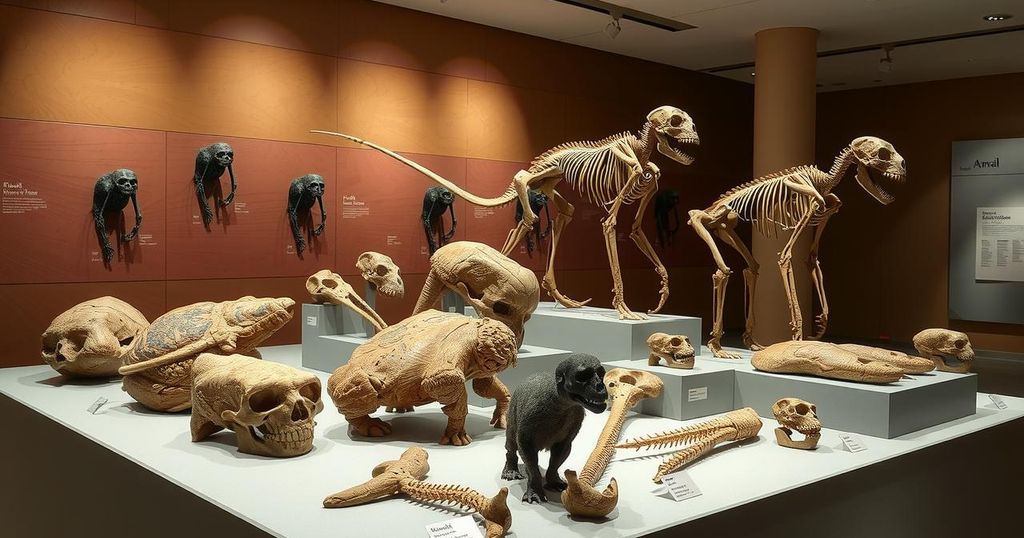Science
ANTARCTICA, ARCHAEOLOGY, CALIFORNIA, EDUCATION, ENVIRONMENTAL IMPACT, HISTORY, JOHN VIDALE, LIA, LIANXING WEN, LOS ANGELES, NEW YORK, NIK, NIKK OGASA, NORTH AMERICA, SCIENCE, SOUTH SANDWICH ISLANDS, STONY, STONY BROOK UNIVERSITY, TRANSPORTATION, UNITED STATES, UNIVERSITY, UNIVERSITY OF SOUTHERN, UNIVERSITY OF SOUTHERN CALIFORNIA, VIDALE
Nina Oliviera
0 Comments
The Puzzling Rotation of Earth’s Inner Core Revealed
Researchers have found that Earth’s inner core has been rotating slower compared to its mantle since 2010, confirming an earlier claim of a rotation reversal every 35 years. Seismic studies indicate this shift began around 2008, with the core now moving less than half as quickly as before. This complex matter remains debated among scientists, with insights into the core’s behavior potentially emerging in the coming decade.
Deep within the swirling chaos of Earth’s interior, a curious phenomenon has unfurled—the very heart of our planet appears to be spinning at a slower pace. As seismic waves dance through the crust, researchers have uncovered that, since around 2010, the inner core has more or less hit the brakes compared to the layers above it. This intriguing observation builds on last year’s bold claim that our inner core may have flipped its rotation, shifting against the mantle’s movement approximately every 35 years.
Imagine two vehicles on a silent highway, one—a bus—pressing forward, while a truck lags behind. Even though both are still progressing in the same direction, the bus now seems to overtake the truck. That’s akin to how seismologists view the inner core’s behavior: from our surface vantage point, it appears to be retreating. John Vidale, a geophysicist at USC, notes that the inner core is indeed turning slower than the recent past, affirming the unique twist of events occurring beneath our feet.
However, not all scientists are convinced of the inner core’s independent rotation. Some, like Lianxing Wen from Stony Brook University, suggest that the inner core’s movements are more closely tied to its changing surface rather than any solitary spin. Others propose oscillations in rotation that happen over varied periods.
The recent study led by Vidale focused on earthquake waves captured between 1991 and 2023, particularly those from the South Sandwich Islands. By scrutinizing these recurring seismic signatures, the researchers discovered that 25 out of 200 waveforms matched over time. This discovery hints that the inner core might have reset its spin around 2008, albeit now at a much slower pace. Could these changes be the result of gravitational manipulation from the mantle, pressing down on the molten core, altering its shape?
As debates rage on among scientists, the search for clarity continues, with Hrvoje Tkalčić from Australia suggesting that the true nature of the inner core’s behavior lies possibly between the rotating and oscillating theories. Moving forward, researchers are keen to monitor the inner core’s behavior over the next decade, hoping to capture the essence of its motion and unlock the mysteries it holds.
The Earth’s inner core, a solid sphere made of iron and nickel, sits beneath the outer core and mantle, constituting the planet’s innermost layer. Studies of seismic waves—energy waves produced during earthquakes—have been instrumental in understanding the dynamics of the inner core. Recent studies have suggested a deceleration in rotation and a potential reversal that occurs roughly every 35 years, stirring both excitement and skepticism within the scientific community about the processes driving this phenomenon. As geophysicists analyze data, various schools of thought emerge surrounding the complexities of the core’s behavior, shedding light on our planet’s unseen activities.
In essence, while the intrigue of the Earth’s inner core continues to captivate researchers, the journey towards understanding its rotation reveals a network of competing theories and observations. With the promising prospects of monitoring its oscillations in the coming years, scientists hope to decode the mysteries hidden deep within our planet. Ultimately, the study of the inner core not only challenges our understanding of geology but also underscores the dynamic nature of our ever-evolving Earth.
Original Source: www.sciencenews.org




Post Comment